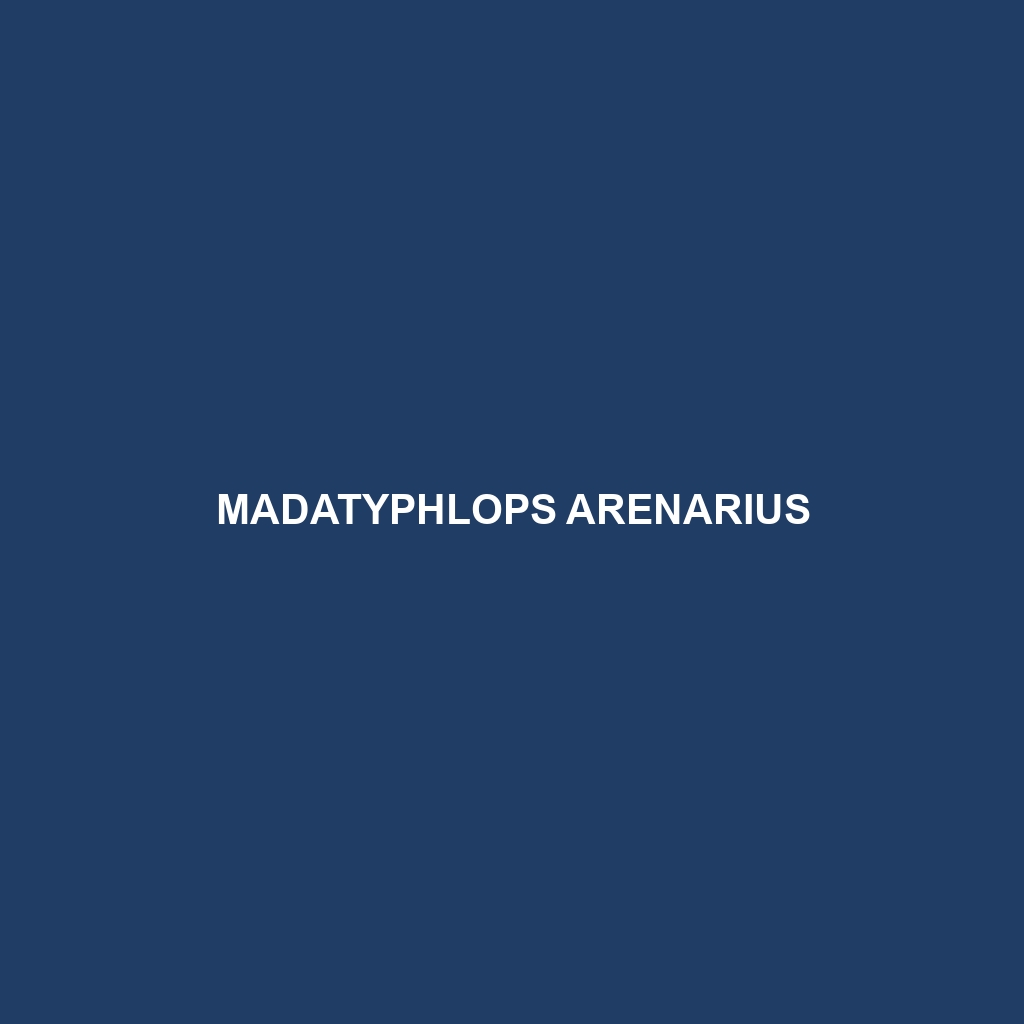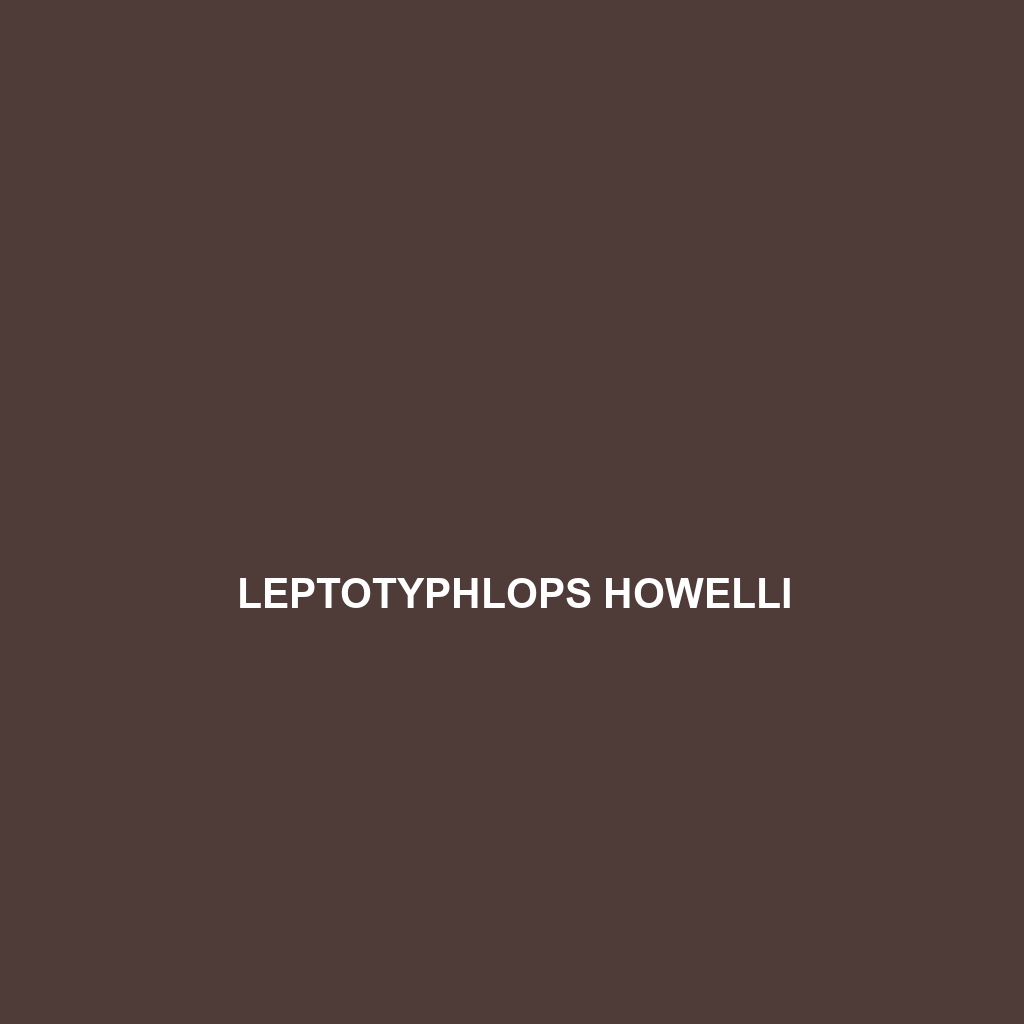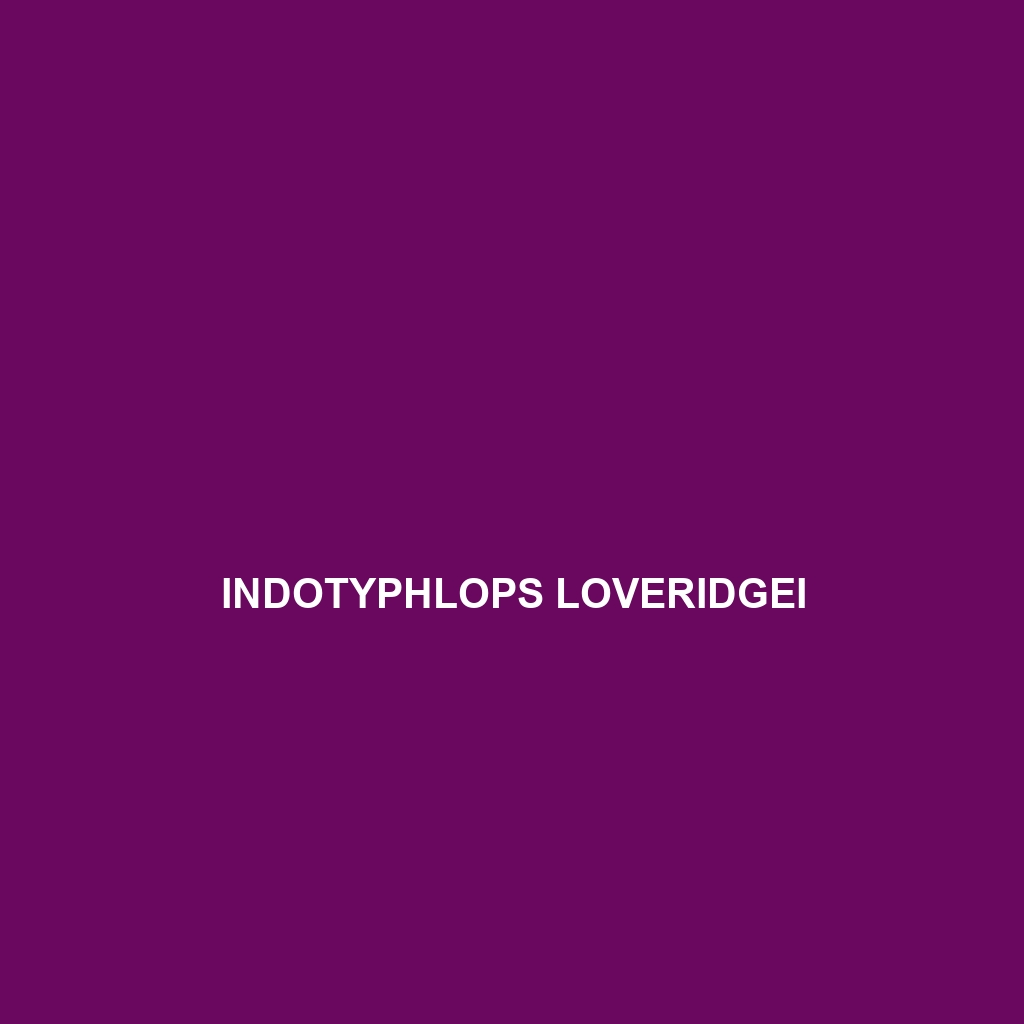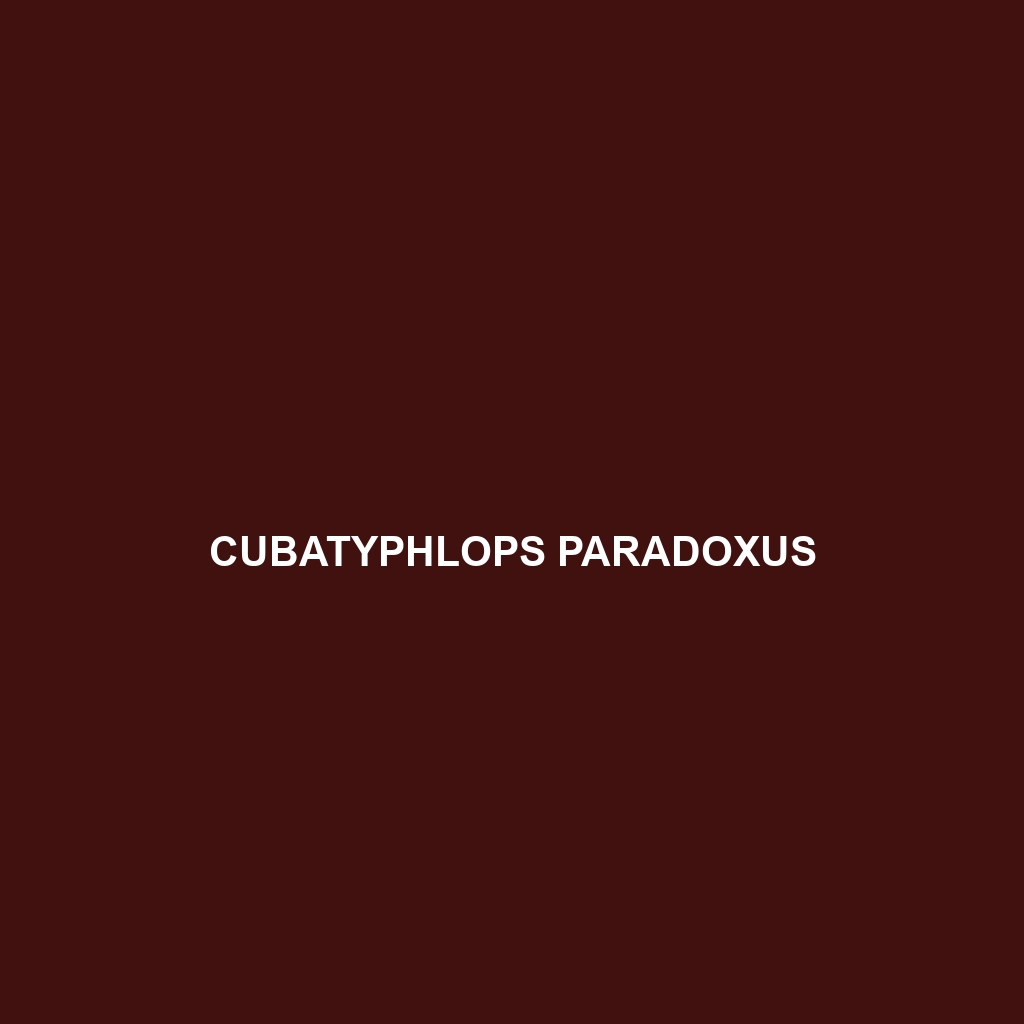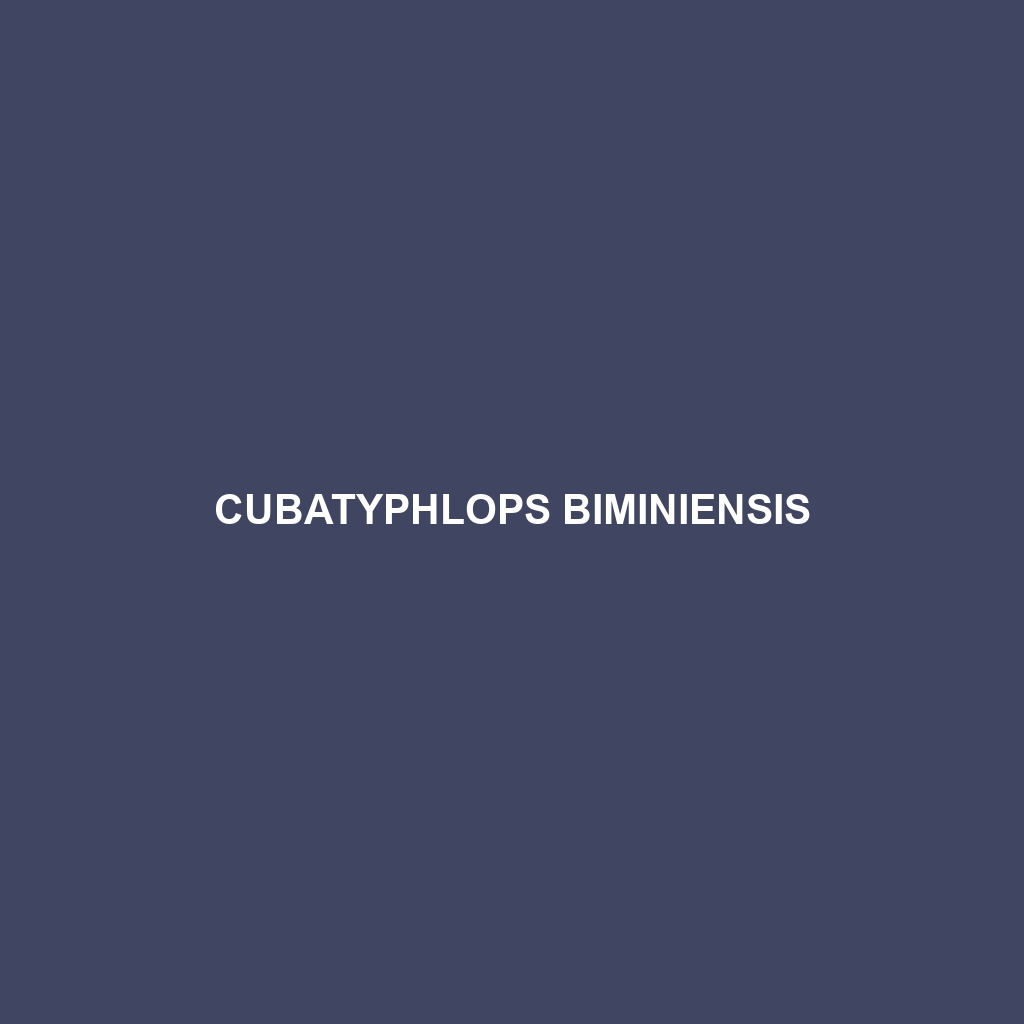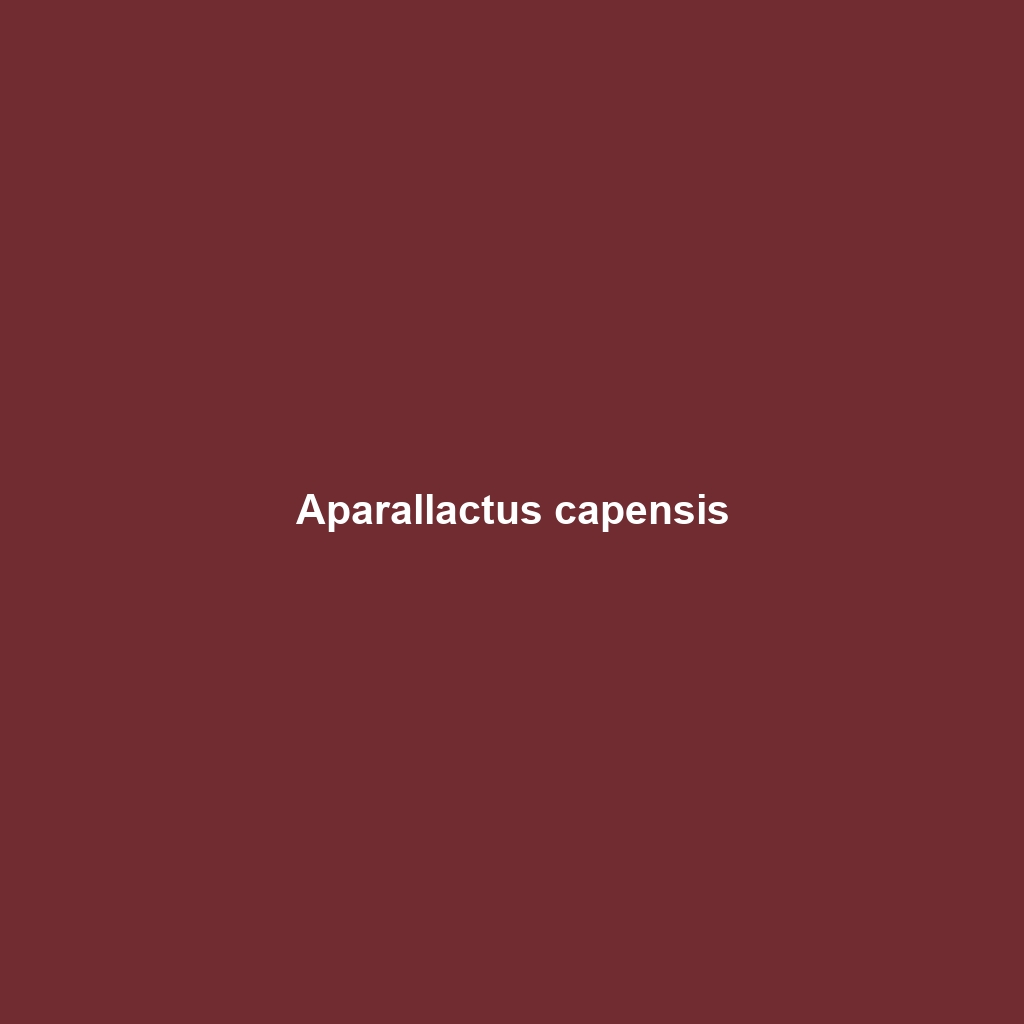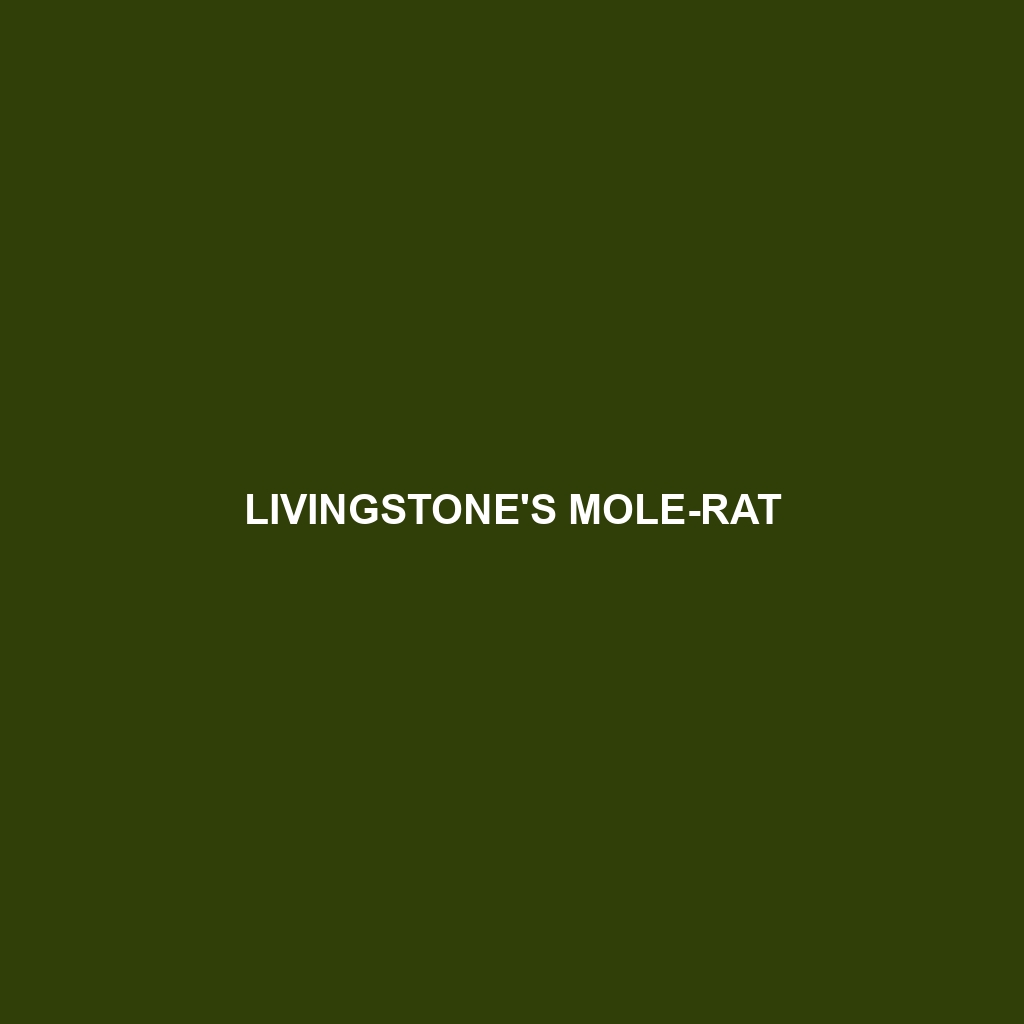The <b>Madatyphlops arenarius</b>, or sand-dwelling blind snake, is a small, nocturnal insectivore found in arid regions of southern Africa, particularly in sandy habitats of <b>South Africa</b> and <b>Namibia</b>. Reaching lengths of up to 30 cm, this smooth, beige or pale brown snake exhibits reduced eyes and uses its burrowing abilities to hunt for ants and termites while playing a vital role in the ecosystem by controlling invertebrate populations.
Tag: underground habitat
Leptotyphlops howelli
Discover the fascinating <b>Howell's blind snake</b> (<i>Leptotyphlops howelli</i>), a small, fossorial species native to the southeastern United States, known for its slender body, reduced eyesight, and diet primarily consisting of small invertebrates. Adapted to sandy soils in temperate forests and savannas, this nocturnal snake plays a vital role in regulating insect populations and maintaining ecological balance.
Indotyphlops loveridgei
Discover the fascinating Indotyphlops loveridgei (Loveridge's blind snake), a nocturnal inhabitant of East Africa's lush rainforests, known for its slender, eyeless body and diet primarily consisting of small invertebrates. This intriguing species plays a key role in soil aeration and insect population control, contributing to the health of its ecosystem.
Cubatyphlops paradoxus
Discover the fascinating Cubatyphlops paradoxus, a small, slender fossorial snake native to the humid environments of the Caribbean, known for its unique burrowing abilities and vital role in soil health. With its light brown coloration and nocturnal foraging habits, it primarily feeds on small invertebrates and lays eggs during the rainy season, making it a remarkable part of its ecosystem.
Cubatyphlops biminiensis
Cubatyphlops biminiensis, commonly known as the Bimini blind snake, is a fossorial species found primarily in the Caribbean, particularly the Bahamas. This vulnerable serpent, reaching lengths of 30 to 45 cm, is characterized by its smooth, cylindrical body, secretive behavior, and diet primarily consisting of small invertebrates, playing a vital role in natural pest control and soil aeration.
Aparallactus capensis
Discover the unique Aparallactus capensis, or Cape blind snake, known for its subtle and slender form, nocturnal habits, and vital role in soil aeration as it thrives in the diverse habitats of southern Africa. This fascinating species primarily feeds on small invertebrates, exhibiting gentle behavior and remarkable adaptations to a burrowing lifestyle.
Mechow’s Mole-rat
Discover the fascinating world of Mechow's Mole-rat, a unique rodent native to the grasslands and savannas of eastern and southern Africa. Learn about its social behaviors, nocturnal lifestyle, and crucial role in soil aeration and plant growth, while exploring the challenges it faces due to habitat loss. Join us as we delve into the life of this remarkable species and its significance within the ecosystem.
